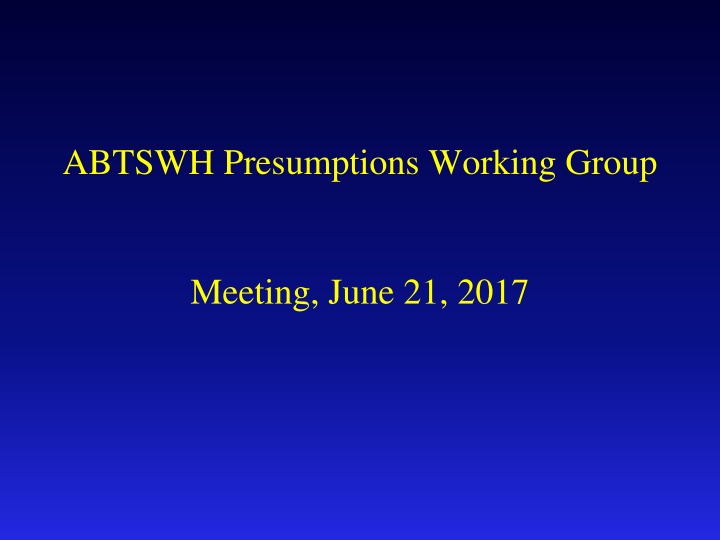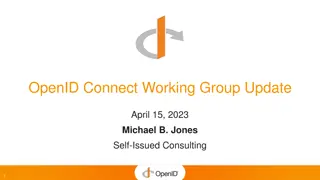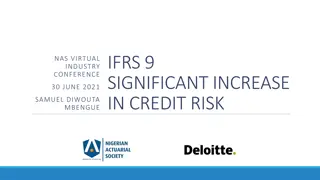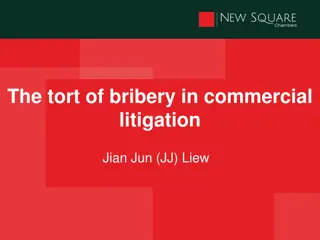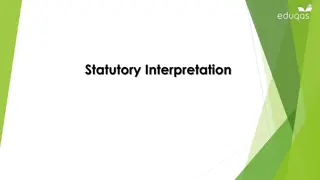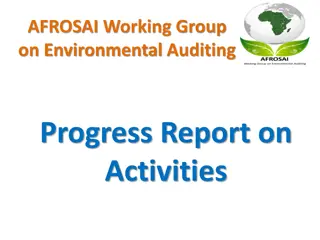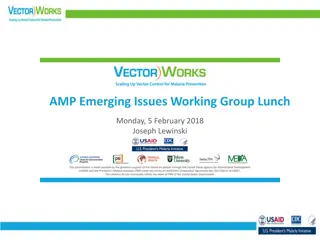ABTSWH Presumptions Working Group
the EEOICPA Procedure Manual Chapter 18 detailing eligibility criteria for non-cancerous conditions, with sources of medical evidence for asbestos-related diseases like asbestosis. Learn about the recognition of various asbestos-related illnesses by EEOICP, along with recommendations regarding presumptions for specific work-related conditions. Discover insightful information from the ABTSWH Working Group Meeting in June 2017.
Download Presentation

Please find below an Image/Link to download the presentation.
The content on the website is provided AS IS for your information and personal use only. It may not be sold, licensed, or shared on other websites without obtaining consent from the author.If you encounter any issues during the download, it is possible that the publisher has removed the file from their server.
You are allowed to download the files provided on this website for personal or commercial use, subject to the condition that they are used lawfully. All files are the property of their respective owners.
The content on the website is provided AS IS for your information and personal use only. It may not be sold, licensed, or shared on other websites without obtaining consent from the author.
E N D
Presentation Transcript
ABTSWH Presumptions Working Group Meeting, June 21, 2017
Recommendations, EEOICP Presumptions, ABTSWH 1. COPD (exposure) 2. Asbestos-related diseases (exposure) 3. Work-related asthma (exposure and disease) 4. Solvents and hearing loss (exposure) 5. Cessation of post-1995 exposure presumption 6. Endorsed current CBD-sarcoidosis presumption
EEOICP recognizes: Non-malignant asbestos-related disease Asbestosis Pleural plaques and pleural thickening Benign asbestos-related pleural effusion Malignant asbestos-related disease Malignant mesothelioma Lung Cancer Cancer of ovary Cancer of larynx
EEOICPA Procedure Manual Chapter 18 Eligibility Criteria for Non-Cancerous Conditions Medical Evidence of Asbestosis Sources of evidence: 1. Opinion of qualified MD based on CXR, CT, MRI, PFT, or lung biopsy. 2. DOE FWP physician finding 3. Death certificate
EEOICPA Procedure Manual Chapter 18 Eligibility Criteria for Non-Cancerous Conditions Medical Evidence of Asbestosis Sources of evidence: 1. Opinion of qualified MD based on CXR, CT, MRI, PFT, or lung biopsy. 2. DOE FWP physician finding 3. Death certificate
EEOICPA Procedure Manual Chapter 18 Eligibility Criteria for Non-Cancerous Conditions Medical Evidence of Asbestosis 1. Opinion of qualified MD: CXR - pulmonary interstitial fibrosis + heart enlargement CT/MRI - lung scarring, pleural thickening, heart enlargement PFT - restriction; requires MD interpretation Lung biopsy - sputum cytology or bronchial lavage often show asbestos bodies but not definitive
EEOICPA Procedure Manual Chapter 18 Eligibility Criteria for Non-Cancerous Conditions Medical Evidence of Asbestosis 2. DOE FWP Physician assessment of asbestosis or asbestos-related lung disease
EEOICPA Procedure Manual Chapter 18 Eligibility Criteria for Non-Cancerous Conditions Medical Evidence of Asbestosis 3. Death certificate Cites asbestosis as cause or contributing factor. If DC cites diagnosis other than asbestosis, need evidence to support the diagnosis of asbestosis.
EEOICPA Procedure Manual Chapter 18 Eligibility Criteria for Non-Cancerous Conditions Mesothelioma of pleura confirmed diagnosis
EEOICPA Procedure Manual Chapter 18 Eligibility Criteria for Non-Cancerous Conditions Pleural plaques (PP), Pleural effusions (PE) Supportive medical evidence: 1. MD diagnosis 2. CXR, CT or other imaging evidence of PP or pleural thickening (PT) not due to surgery or trauma 3. Rounded atelectasis 4. Bilateral pleural effusions
EEOICPA Procedure Manual Chapter 18 Eligibility Criteria for Non-Cancerous Conditions Pleural plaques, pleural effusions CE is to consult with treating MD or CMC if: 1. Evidence is inconclusive 1. PT is in area of surgery or trauma 1. Evidence for other causes of PE is present
Former Worker Medical Screening Program Surveillance case definitions Asbestosis: a reported history of exposure to asbestos, or job title with a reasonable likelihood of asbestos exposure + a B-reading of standard PA chest film demonstrating bilateral irregular parenchymal opacities (shape and size: s,t,u) with profusion score of 1/0 or greater
Former Worker Medical Screening Program Surveillance case definitions Asbestos-related pleural disease: a reported history of exposure to asbestos, or job title with a reasonable likelihood of asbestos exposure + a B-reader notation of findings of unilateral or bilateral pleural thickening consistent with pneumoconiosis
Proposed Diagnostic Criteria Asbestosis #1: History of asbestos exposure, and Radiography (CXR or CT): Bilateral diffuse interstitial fibrosis affecting any combination of mid- and lower lung zones. If ILO scoring is used, >1/0 s, t, or u opacities
Proposed Diagnostic Criteria Asbestosis #2: DOE FWP physician finding
Proposed Diagnostic Criteria Asbestosis #3: History of asbestos exposure, and Pathology: Histologic evidence of diffuse interstitial fibrosis of the lung
Proposed Diagnostic Criteria Asbestosis: As an alternative to a history of asbestos exposure, asbestos exposure can be documented if lung tissue burden finds concentrations of asbestos fibers or asbestos bodies consistent with excessive asbestos exposure by the examining laboratory.
Proposed Diagnostic Criteria Asbestos-related pleural disease History of asbestos exposure, and Radiography (CXR or CT): Unilateral or bilateral pleural thickening or plaques that is not readily explained by another cause
Proposed Diagnostic Criteria Asbestos-related pleural effusion History of asbestos exposure, and Diagnosis of unilateral or bilateral pleural effusions that are not readily explained by another cause
Proposed Diagnostic Criteria Mesothelioma (pleural), Cancer of Lung, Ovary, and Larynx 1. Documented by pathology, or 2. Clinical and radiological presentation that favors malignant mesothelioma of pleura or cancer of lung, ovary, or larynx, or 3. Death certificate: cause, underlying or primary or contributing factor
Additional Candidate Issues for EEOICP Presumptions ABTSWH 1. Parkinsonism? 2. Other neurologic diseases? 3. Kidney disease? 4. Others
